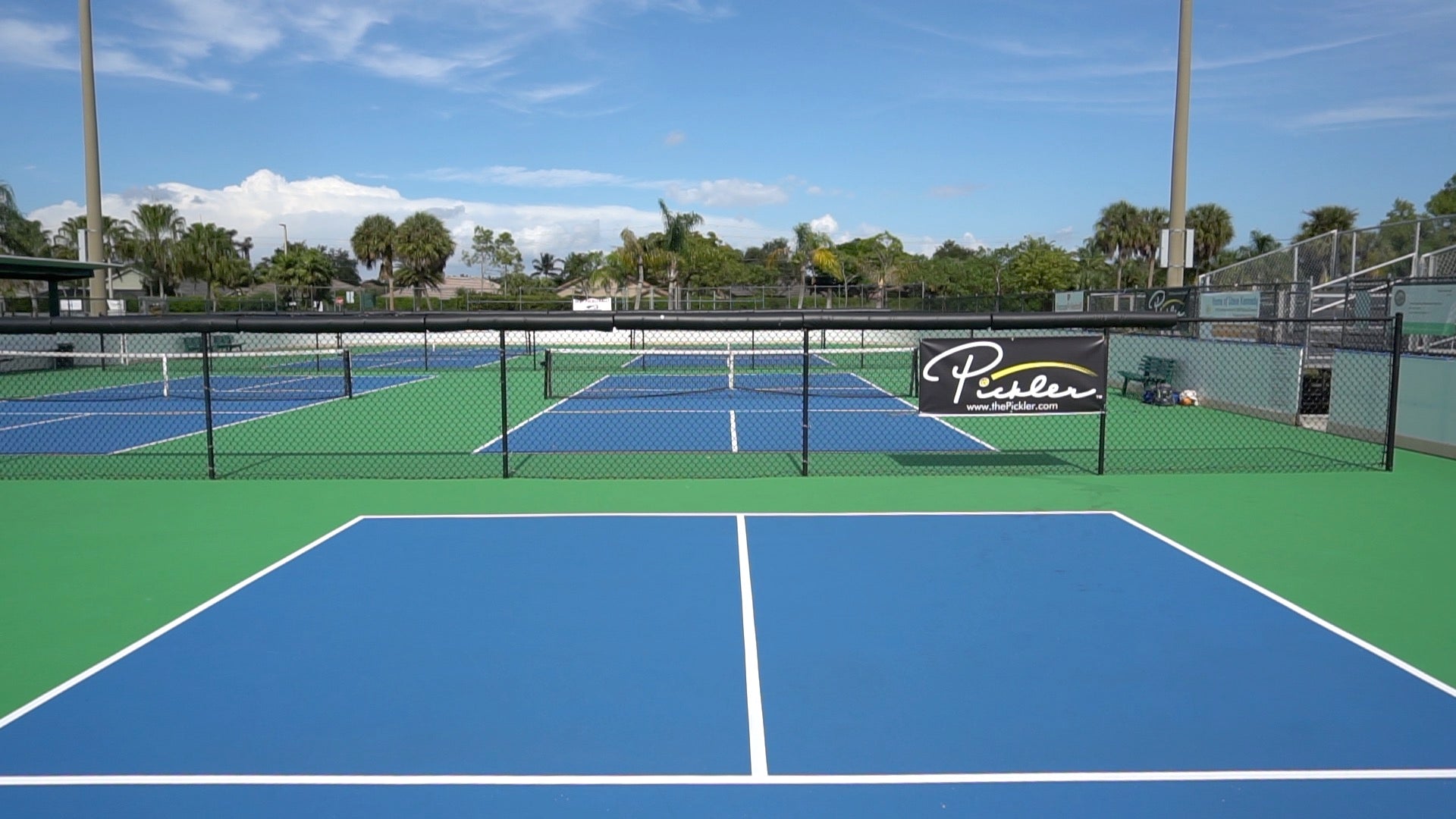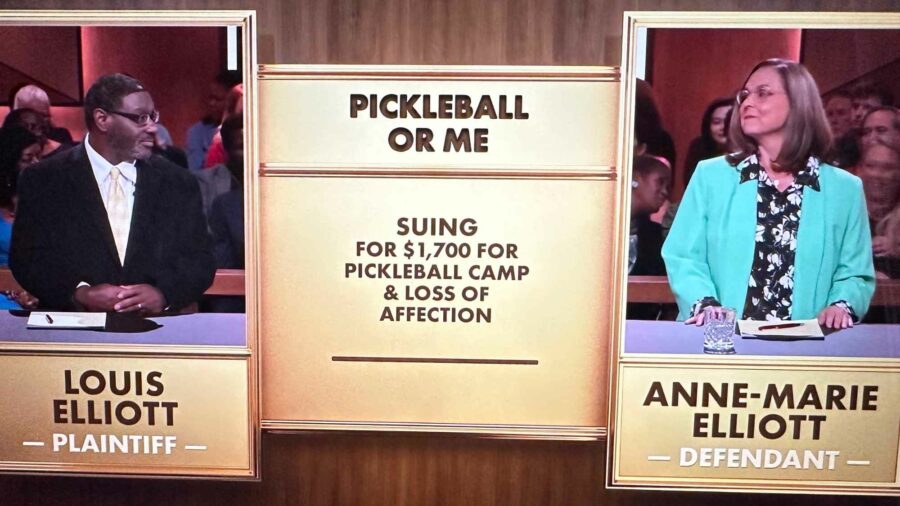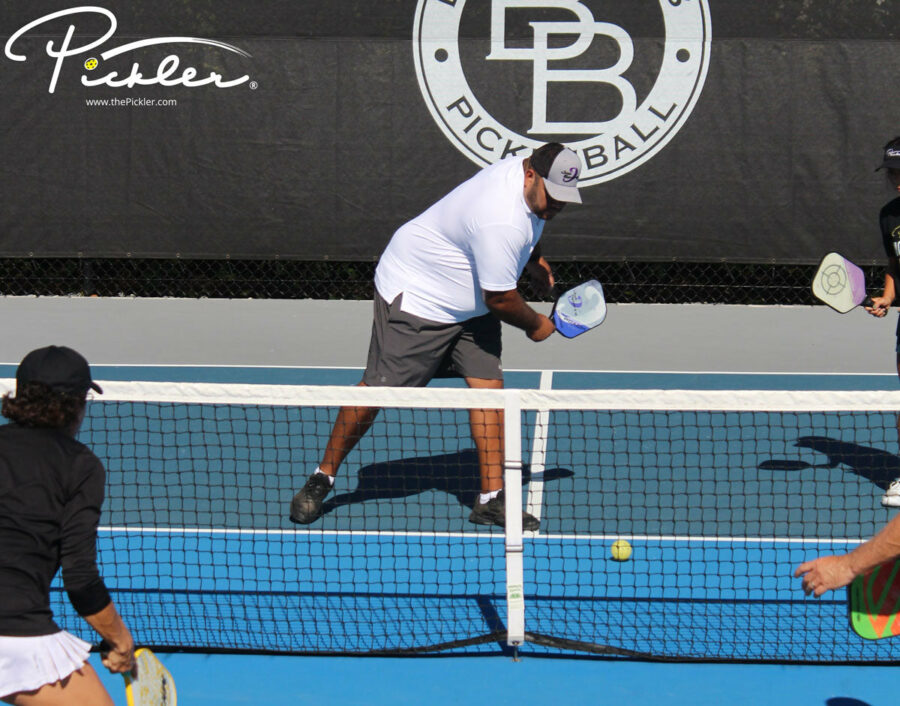Pickleball is a sport that is commonly referred to as a mix of tennis, badminton, and ping pong. Pickleball is a racquet/paddle sport that is played with a paddle and a whiffle ball (i.e. a plastic ball with holes) on either an indoor or outdoor court that is the same size as a badminton court and a modified tennis net (i.e. a pickleball net is four inches lower than a tennis net). Pickleball is a sport for all ages and skill levels, that can be played as either doubles or singles, is easy to learn, and comes with an amazing and welcoming culture and community of people.
Although pickleball may be played in both doubles and singles, it is most commonly played as a doubles game. So, there will be two people set up on each side of the pickleball court to start a game. To start a pickleball game, one team will serve. The pickleball must be served crosscourt and beyond the Non-Volley Zone or Kitchen (to be discussed below). Unlike tennis, the serve in pickleball must be underhand. Also, unlike tennis, both the serve and the return of serve must bounce. This is called the 2-bounce or 3-hit rule. After the serve and return of serve, either team may volley the pickleball. In other words, after the serve and return of serve, either team may hit the pickleball either in the air or after a bounce. To note, if the pickleball bounces twice, then the point is over. Lastly, unlike tennis, there are no faults (however, there are lets if the serve hits the net and enters the proper service box).
What makes the sport of pickleball truly unique is the part of the pickleball court called the Non-Volley Zone, which is also affectionately called the “Kitchen.” The Non-Volley Zone or Kitchen is the 14-foot area in the middle of the court, which extends 7 feet on either side of the pickleball net. You may not volley (i.e. hit the pickleball in the air and without a bounce) the pickleball while making contact with the Non-Volley Zone or Kitchen. Contact with the Non-Volley Zone or Kitchen includes standing in the Non-Volley Zone or Kitchen, dropping your paddle or hat into the Non-Volley Zone or Kitchen, or allowing your momentum to carry you into the Non-Volley Zone or Kitchen after you hit the pickleball outside of the Non-Volley Zone or Kitchen. To note, reaching over the Non-Volley Zone or Kitchen Line above the surface area of the court to hit the pickleball is permitted. Also, to note, you may hit the pickleball in the Non-Volley Zone or Kitchen after the pickleball has bounced, and you may generally stand in the Non-Volley Zone or Kitchen (although, not recommended) as long as you are not volleying the pickleball. Again, to be making contact with the Non-Volley Zone or Kitchen, you must make contact with the ground with any part of your body, paddle, or clothing. This includes both at the time you are making contact with the pickleball and after you make contact with the pickleball if your momentum carries you into the Non-Volley Zone or Kitchen. In other words, it is a fault if your momentum carries you into the Non-Volley Zone or Kitchen even if you make contact with the pickleball outside of the Non-Volley Zone or Kitchen.
Now, each team in doubles pickleball will receive two serves, one for each partner, except for the team that serves to start the game. The team that serves to start the game will only receive one serve. After that, each team has two serves. A player loses his or her serve when the opposing team wins the point. If both partners on a team lose their serves, then the opposing team will serve. Remember, the team that serves first only has one serve to start the game. The first serve of each side will always start on the even/right-hand side of the pickleball court. If the serving team wins the point, then the server and his or her partner will switch sides of the court. The server will then serve diagonally in the other direction.
Only the serving team can score points. Most games in pickleball are played to 11 (win by 2), although some games in tournament settings may be played to 15 or 21 (win by 2). A quick rule of thumb to keep track of where you are on the pickleball court is as follows:
- If your score is even (0, 2, 4, 6, 8, 10, etc.), then the player that started on the even/right-hand side of the pickleball court to start the game should be on the even/right-hand side of the pickleball court.
- If your score is odd (1, 3, 5, 7, 9, etc.), then the player that started on the even/right-hand side of the pickleball court to start the game should be on the odd/left-hand side of the pickleball court.
You must keep track of three numbers to follow the score in doubles pickleball. The first number is your team’s score. The second number is the opposing team’s score. And, the third number is what number serve it is for serving team. This is why you start every pickleball game with a score of 0-0-2. Zero is both the serving and receiving team’s score, and 2 is for the second serve, as each game in pickleball starts by the serving team having only one serve.
Singles pickleball generally has the same rules as doubles pickleball, except that each player only has one serve (to note, there is no need for the third number if you are keeping track of the score in singles pickleball).
Lastly, it is worth noting that all lines on the pickleball court are considered in play, with the exception of the Non-Volley Zone or Kitchen Line on the serve. If the serve bounces on the Non-Volley Zone or Kitchen Line, then that is a fault and the server will lose his or her turn to serve.
So, are you ready to play pickleball?!
Key Takeaway:
Pickleball is a sport for all ages and skill levels, is easy to learn, and comes with an amazing and welcoming culture and community of people. Welcome to the pickleball community!




